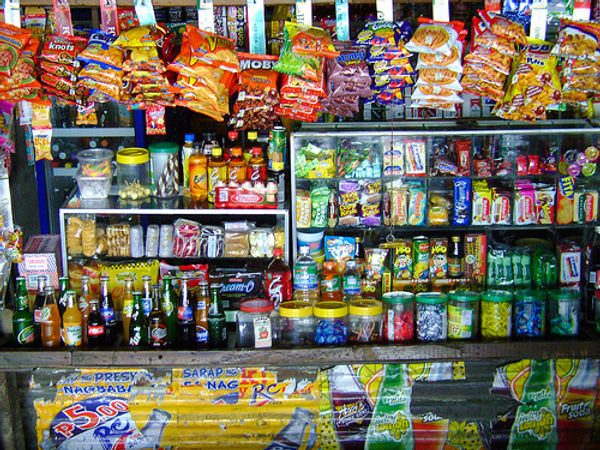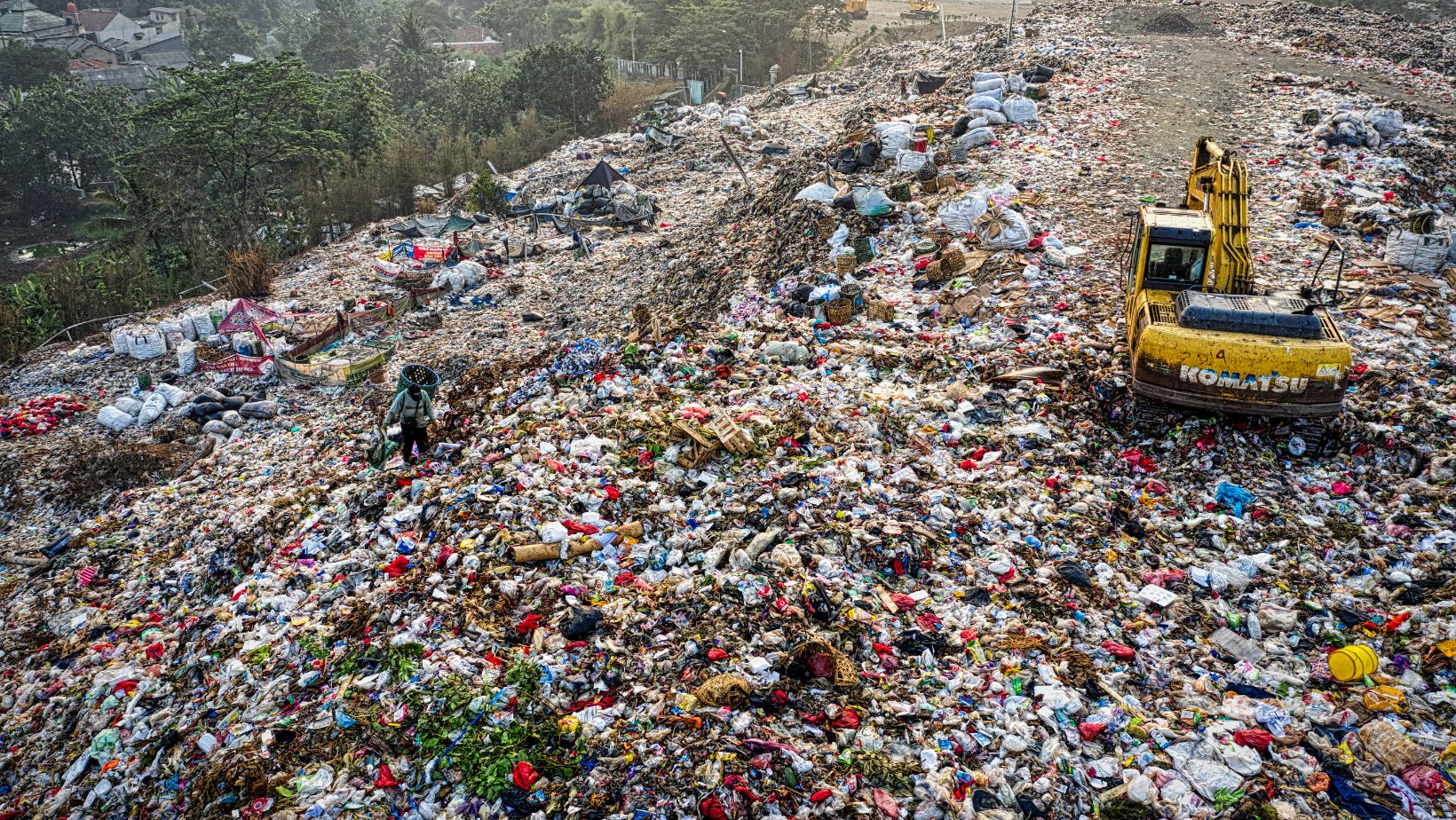
Imagine stopping at your local store and walking out with a single cup of coffee, a dollop of shampoo, and just enough detergent for one load of laundry – all individually packaged. This isn’t a glimpse into a dystopian future, but a reality for billions of people in the developing world. Welcome to the sachet economy – a fascinating economic phenomenon where small is big, and less offers more.
In a world where we’re accustomed to buying in bulk, the concept of the sachet economy might sound strange, even impractical. But for many, it’s a daily reality and a lifeline to essential goods. It’s a world where everyday products are sold in bite-sized, single-use packages, making them affordable and accessible to all.
From hair care products to instant coffee, these miniaturized goods are not just conveniences – they represent a significant shift in consumption patterns, one that is having far-reaching impacts on economies, societies, and the environment.
In the complex fabric of global commerce, a unique trend has emerged that is redefining the way we consume everyday products. This trend, known as the sachet economy, is reshaping markets, particularly in less affluent communities, where affordability and accessibility are paramount.
The sachet economy is not a new concept, but its roots have grown deeper with the increasing need for cost-effective consumer goods. It all started with manufacturers breaking down their products into smaller, cheaper units packaged in sachets. This ingenious approach made goods more accessible to a broader demographic, particularly those who couldn’t afford to buy in bulk. From shampoo and coffee to laundry detergent and food items, sachets have become a common sight in local stores across the globe.
Southeast Asia, in particular, has embraced the sachet economy with open arms. This region accounts for nearly half of the global sachet market and continues to show promising growth. The Philippines, for instance, is often referred to as the “Sachet Capital” of the world due to the prevalent use of sachets in the country.
Sachets have woven themselves into the fabric of our daily lives. They bring an array of products, from condiments to cosmetics, within easy reach of consumers. The allure of sachets lies not just in their affordability, but also in their convenience. They’re easy to carry, simple to use, and effortlessly disposable, making them an attractive choice for consumers on the go.
However, the proliferation of sachets also brings to light a significant concern – waste generation. Globally, it’s estimated that billions of these small packets are sold and discarded every day, contributing significantly to the world’s overall waste generation. Single-use plastic sachets, which are difficult to recycle, often end up in landfills or oceans, posing a serious threat to the environment.
While the sachet economy has its advantages, it’s important to note that it also presents significant challenges, particularly in terms of environmental impact. Balancing these benefits with the need for sustainability is key to creating a sachet economy that can truly benefit all stakeholders.

It’s clear that while the sachet economy has its benefits, it also presents significant challenges. Addressing these issues will require innovative solutions and concerted efforts from all stakeholders – manufacturers, consumers, and policymakers alike.
Governments and industries worldwide are increasingly recognizing the need to address the challenges posed by the sachet economy. Both sectors have begun implementing measures aimed at mitigating the environmental impact of sachets while still catering to consumer needs.
Several countries have taken regulatory steps to manage sachet waste. The Philippines, for example, passed the Ecological Solid Waste Management Act in 2000, which mandates waste segregation and promotes recycling1. Despite this, sachets remain a significant problem due to compliance issues and lack of infrastructure. To further address this, the government is considering imposing a ‘plastic tax’ on single-use plastic items, including sachets2.
Similarly, in India, the Plastic Waste Management Rules 2016 require manufacturers, importers, and brand owners to work towards reducing the environmental impact of plastic waste, including sachets3. They’re also encouraged to use eco-friendly alternatives and undertake extensive public awareness campaigns on plastic waste management.
On the industry side, many companies are exploring sustainable alternatives to traditional sachet materials. Unilever, for instance, has pledged to make all its plastic packaging reusable, recyclable, or compostable by 20254. As part of this commitment, they’ve launched ‘CreaSolv Process’, a technology that recovers plastic from sachet waste, transforming it into new packaging material5.
Another company, Evoware, has developed a seaweed-based sachet material that’s not only biodegradable but also edible6. This innovative solution addresses both the problem of plastic waste and overfishing by providing an additional income source for seaweed farmers.
These initiatives reflect a growing recognition of the need to balance consumer demand with environmental responsibility. However, given the scale of the sachet problem, more needs to be done. Achieving a truly sustainable sachet economy will require further innovation, greater regulatory oversight, and increased consumer awareness about the environmental implications of their consumption choices.
Innovation is indeed at the forefront of addressing the environmental and socioeconomic issues associated with the sachet economy. Across the globe, companies are exploring creative alternatives and novel systems to strike a balance between convenience, affordability, and sustainability.
One such innovation is refillable sachets. These are designed to be used multiple times, significantly reducing the amount of waste compared to single-use sachets. For instance, a company named Algramo from Chile has developed a mobile refill system. They sell cleaning products in reusable containers that can be filled using vending machines installed on electric tricycles. This not only cuts down on plastic waste but also makes products more affordable by eliminating the ‘poverty premium’ associated with single-use sachets.
Bulk dispensing systems offer another sustainable alternative. These systems allow consumers to buy products in whatever quantity they need, using their own reusable containers. This approach provides the affordability and flexibility of sachets without the excessive packaging. In Indonesia, a startup called Siklus delivers household goods in refillable containers, using a door-to-door model.
There’s also a push towards using biodegradable materials for sachets. As previously mentioned, Evoware has developed a seaweed-based sachet material that’s biodegradable and even edible. This innovative solution is a step towards a circular economy where waste can be minimized or even beneficial.
Companies are also investing in technologies to recycle sachet waste. Unilever’s ‘CreaSolv Process’ is one such example. It’s a technology that recovers plastic from sachet waste and transforms it into new packaging material.
These innovations represent promising steps towards a more sustainable sachet economy. However, widespread adoption will require overcoming various challenges, including cost, consumer acceptance, and regulatory support. By continuing to invest in innovation and promote sustainable practices, it’s possible to transform the sachet economy into a model that benefits both people and the planet.
The sachet economy, which has been driven by the need for affordability and convenience, especially in developing regions, is at a crucial turning point. As the environmental consequences of single-use sachets become more evident, the future of this sector is likely to be shaped by a combination of innovative solutions, shifts in consumer awareness, and regulatory interventions.
Increasing awareness about the environmental impact of sachets is beginning to influence consumer behavior. A global survey by Nielsen found that 73% of consumers would definitely or probably change their consumption habits to reduce their impact on the environment1. This growing consciousness could translate into demand for more sustainable packaging options, pushing the sachet industry to innovate and evolve.
To meet this rising demand for eco-friendly alternatives, companies are investing in research and development to create sustainable packaging solutions. From refillable sachets to biodegradable materials and bulk dispensing systems, these innovations aim to offer the convenience of sachets without the environmental cost.
As an example, startup Notpla has developed an edible water sachet made from seaweed, called “Ooho”. The sachet biodegrades in just 4-6 weeks if not consumed, providing a glimpse into what the future of the sachet economy could look like.
Government regulations will also play a significant role in shaping the future of the sachet economy. Policies encouraging or mandating the use of eco-friendly packaging, or imposing taxes on single-use plastic items, can provide a strong incentive for companies to adopt more sustainable practices. The Indian government’s Plastic Waste Management Rules 2016 is a prime example of such regulatory intervention.
The sachet economy, while being a boon for affordability and convenience, also poses an environmental conundrum. It’s a delicate balancing act between catering to human needs and safeguarding our planet’s health. In this context, it’s crucial that we chart a path forward with prudence, aiming to harmonize the accessibility of products with the principles of environmental conservation.
This equilibrium calls for transformations on several fronts. One such transformation is the need for industries to revisit their packaging strategies. At Restore, we are committed to this change. We believe in investing in innovative solutions that reduce waste but don’t compromise on the convenience factor. We’ve observed encouraging progress in this sector, from refillable sachets to bulk dispensing systems and even biodegradable materials. However, it’s time these advancements transitioned from being niche solutions to standard industry practices.
An equally significant role is played by us consumers. As the end-users, our choices can significantly steer market trends. By opting for products with sustainable packaging, we send a strong signal to manufacturers about our preferences. This could involve choosing refillable containers, backing companies like Restore that prioritize sustainability, or even reassessing our own consumption patterns.
Moreover, regulatory bodies and governments can speed up the shift to a more sustainable sachet economy through policies and regulations. These measures can incentivize eco-friendly practices and discourage the excessive use of single-use plastics.
In summary, although the sachet economy presents a noteworthy challenge, it also opens up opportunities for innovation and adaptation. By making informed choices, supporting sustainable alternatives like Restore, and advocating for responsible industry practices, we can help reshape the sachet economy to align with environmental sustainability principles. The road may be intricate, but with a united effort, a sustainable sachet economy is attainable.